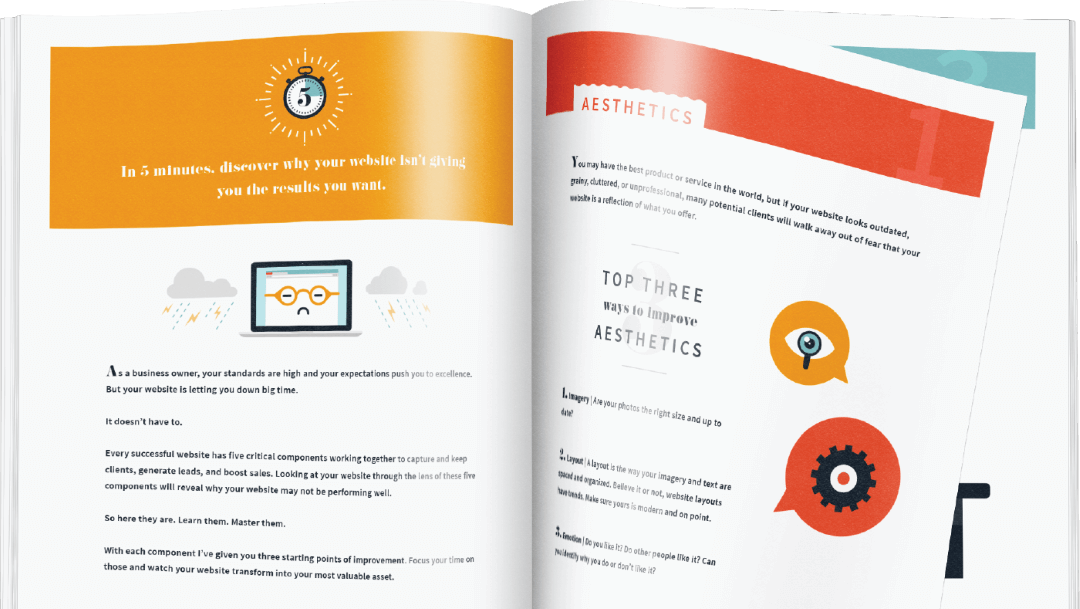Okay, total honesty time.
I’m going to let you in on a secret.
Even professional copywriters sometimes struggle to write good content.
Yeah I know, it’s our job. But it can be a tricky job and writer’s block is a real malady.
Lucky for all of us, there are simple ways to escape writing paralysis and start generating great content.
You can borrow from the same strategies the pros use and start stepping up your writing game!
Remember the Three S’s: SKIM, SCAN and SCROLL
This nifty little acronym comes to us from noted copywriter and author Ray Edwards. You can listen to him explain the idea on Amy Porterfield’s podcast here, but here’s a quick summary: the internet has trained readers to click a link, skim the first few sentences, scan for the main points and scroll down the page to decide if this post is really worth the effort of reading all the way through.
I’d be willing to bet that’s exactly what you did when you clicked on this post, right? Gotcha!
As your reader is skimming, scanning and scrolling through your website, thinking to themselves, “Why should I hire this service or purchase this product?” you want the answers to those questions to jump right off the page in the form of easily visible bites of information. Don’t make them search for it!
Here are three quick tips to get you started:
1. Write in short “mini-paragraphs”, NOT big chunks of text.
Your grade school teacher probably taught you that a proper paragraph should include something like 5-7 sentences, beginning with a topic sentence and followed by supporting details.
But good web-based content doesn’t follow that rule.
Try separating your text into 1-3 sentence sections, leaving double spaces between each mini-paragraph. Double-spacing produces what designers refer to as, “white space.” Visually, this creates a clean look, which is easy for readers to scan and absorb.
Use bold text and bullet points to highlight your main ideas – the things you really want the reader to understand about you and your business.
2. Use strong, descriptive words
Consider the following two examples:
Example one: “I really like making cupcakes and I hope you and your family will really like them too.”
The above sentence isn’t bad. It’s not wrong. It gets the point across. But if you’ll notice, I used the words, “really,” and “like” twice each and I also used the phrase “I hope.”
The problem here is that as a reader, I can’t sense the excitement you have about baking, I don’t know why I should like your cupcakes and when you tell me, “I hope you like them too,” it makes me wonder how confident you are in your product.
Example two: “I grew up baking in my grandmother’s kitchen and there’s nothing I love more than dreaming up cupcakes in unique, intriguing flavors – cardamom pear with salted caramel, Meyer lemon with coconut cream … I know you’ll find your new favorite!”
Can you hear the difference there? Right off the top, the reader knows something personal about you, that you’re passionate about your recipes, AND you told me about two specific cupcakes that I have to admit, sound incredibly yummy.
Strong, expressive words with supporting examples and details make a HUGE difference. And adding a small, personal detail helps the reader understand who you are and what makes your business stand out.
3. Keep your tone approachable and accessible
When you’re communicating online, the reader doesn’t have the advantage of hearing your tone – the way that you say something. They also can’t stop you and ask for clarification, the way they could face-to-face. Print is tricky that way. So you have to think carefully about who you’re writing for and what you want to communicate about your business.
For example, if you’re hoping to attract new customers who might have very little expertise in your field, you’ll want to minimize the amount of technical jargon you use in your writing. As someone who’s immersed in a specific product or service, it’s really easy to forget that the words you’re using are completely unfamiliar to your audience.
Choosing simple, accessible terms when talking about your product or service will go a long way toward making your business seem friendly and approachable to potential customers.
Still feeling a bit uncertain? We have just the tool for you!
Our Website Assessment Guide will walk you through the five critical components of a successful website! Packed with valuable info and helpful assessments, this handy little guide is here to help you figure out the next steps.
See Also: Overcoming Writer’s Block

